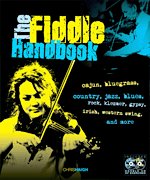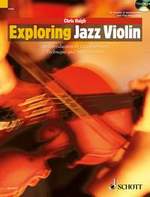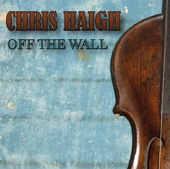
MENU TO FIDDLE STYLES:
FIDDLE BOWING
There is a natural tendency to think of the bow as a minor accessory to the violin, but there are many ways in which this sells the bow well short of its true importance.
In historical terms it was the invention of the bow, some time around the 8th or 9thC, in central Asia, which started the musical revolution which eventually lead to the violin. There had been countless primitive stringed instruments around the world, but they were all plucked. It was the discovery that horsehair stretched tautly across a bent stick, and pulled over the strings of an instrument, could give a long sustained note, which was the game changer. Compared to the sound of a plucked string, the bowed note was infinitely more expressive, and could draw close comparison with the human voice. The invention spread rapidly across Asia, Europe and Africa, and wherever it went, musicians tried it out on their instruments, which were then swiftly modified to make them more compatible with the use of the bow. By the middle ages, there were a host of folk fiddles of every description, most notably in Europe the vielle and rebec, and these eventually led in 16thC Italy to the violin.
As a beginner on the violin, the use of the bow is bafflingly difficult. Just to look at it, there should be nothing easier than dragging the bow across the strings, but simply maintaining the correct balance of downward pressure and smooth horizontal movement is at least as much of a challenge as playing in tune. Even when you have mastered the physical challenge of smooth, precise and accurate bowing, your problems are far from over. As a classical player you will , from your sheet music, be given precise instructions as to which bows should be up and which down. If you are playing in a string section it is immediately and visibly obvious to everyone if you mess this up. In folk music you have quite a different problem. On the positive side, if there are two or more fiddles on the stage, there is absolutely no expectation that the bows should be going up or down at the same time. However that is not to say that for traditional musicians bowing is not important. You have only to listen to a classical violinist attempting to play an Irish jig to realise that there is a whole new set of skills to be learned to be an authentic folk fiddler. Whilst a classical player aims for long, smooth precise bows, and relies on sheet music to choose which notes to slur and which to play up or down, the fiddler is aiming for a subtle balance between the drive required for dance music, and the element of surprise and expression required for listening music. And unlike the classical violinist, the fiddler mostly has to work it out for himself, either by instinct and experience or by understanding and mastering the basic principles of folk fiddle bowing.
The most important decision to make when bowing any particular phrase, is will the notes be slurred or bowed separately? Playing everything with separate bows has the advantage of simplicity, and it gives a clarity to each note which might be lost with slurs. However, it can sound jagged and crude, with little room for expression. In American fiddling, playing without slurs is often referred to as saw stroke bowing.
SLURRED BOWS
There are numerous practical reasons why you might include slurs in your playing. If a particular phrase occurs several times in a tune, you may want, for reasons of simplicity or continuity, to bow it the same way each time, starting with either a down or up bow. If there is an odd rather than even number of bow strokes in the intervening bars, when you return to that phrase, you will find yourself starting on the wrong bow. Slurring two notes together shortly before the return of the phrase will solve this problem.
If you are playing quavers long-short, long-short, as in a hornpipe or a “swung” reel, you will find that even if you start a bar at the heel, you will soon end up at the tip and will run out of bow, for the simple reason that your down strokes are longer than your up strokes. This is easily compensated for by slurring three quavers on an upbow. These are commonly quavers 4,5 and 6, or 6,7 and 8. Using one of these patterns will allow you to stay around the middle of the bow, or wherever you prefer, rather than constantly running out of bow.
Slurring can also be used to create an accent on a particular beat of the bar. By slurring 2,3,4 and 6,7,8, you create an accent or emphasis on the “on beat”-quavers 1 and 5. This is because the bow has to move faster on 1 and 5 in order to balance the three slurred quavers. A more common and useful pattern is to slur 4,5,6 and 8,1,2. This places emphasis on 3 and 7- the “off beat” or “Back beat”. Certain Irish fiddle players make a lot of use of this pattern when playing reels. Listen to Kevin Burke playing “Pinch of Snuff” and you will soon get a feel for the power and drive of this pattern. Burke almost always uses an up bow for his accent. Interestingly, Frankie Gavin, another of Ireland’s top players, will always do the reverse, accenting on a down bow.
JIG BOWING
Jigs are particularly problematic for beginners, in terms of creating a meaningful rhythm. The tendency is to want to play six equal bows to the bar. The result is that the bow hand works very hard but achieves very little. Try tapping your foot six times to the bar and you’ll see what I mean. A jig really has two beats to the bar; ONE two three, TWO two three. This is where you should tap your foot, and where you should apply most of your bow. The accented bows, on the first and 4th quavers of the bar, should be around three inches long, whilst the others should be much shorter, probably less than an inch. The resulting pattern has far more structure and drive to it, whilst requiring much less physical effort.
This kind of repetitive rhythm, with a strong and predictable accent, is excellent for the accompaniment of dancing, which was in past years the primary raison’d'ętre of the fiddler. However, in recent decades playing for dancing and playing for listening have diverged considerably. The majority of top fiddle professionals do most of their playing on the concert stage or on record. In this situation the likelihood is that their audience will be paying close attention to the detail of what the fiddler is doing. A continuous repetitive rhythm, whilst ideal in the noisy atmosphere of a ceilidh, will sound stale and regimented in a concert setting. As a result, modern fiddlers, particularly on the Irish scene, will deliberately vary their bowing approach from bar to bar and phrase to phrase. Bar lines are often deliberately subverted by slurring across them, and slurs can be used to emphasise notes in unexpected places, and create syncopation. The long term goal of the fiddle student should therefore be to practice a wide range of different bowing patterns, and learn to apply them at will to individual phrases where they are most appropriate.
SCOTTISH FIDDLE BOWING
Scottish fiddle music has a number of specialised bowing patterns which are essential to achieving an authentic sound. The strathspey in particular, a medium to slow tune which evolved from the reel, is characterised by the “scotch snap”- a jagged and unpredictable pattern of semiquavers and dotted quavers. The 18thC fiddler Niel Gow is credited with creating the “up-driven bow” pattern to deal with strathspeys. This consists of a short, sharp down bow at the tip, followed by three up bows, the second of which is bounced off the string. Scott Skinner, the 19thC virtuoso introduced many semi-classical techniques into Scottish fiddling, including staccato bowing. Honeyman, in his Strathspey, Reel and Hornpipe Tutor of 1898, haughtily claimed that foreign and English violinists “…cannot give even the feeblest imitation of the effect, though possibly masters of the instrument in every other sense and when their most strenuous efforts only induce a smile from the experienced listener, sometimes lose temper and innocently insist that they are playing the music as it is written”
American country fiddling, perhaps more than any other style, has become associated with the use of rhythmic bowing patterns, referred to as shuffles.
SHUFFLE BOWING
There are four principal patterns. The first of these, already mentioned, is the saw stroke; simply a vigorous up and down approach with mostly separate bows. Secondly there is the Nashville Shuffle. This is a pattern of a crotchet and two quavers (long, short short). The long bow alternates between up and down bows; DOWN up down, UP down up, DOWN up down etc. It is ideal for playing tunes such as Bile em Cabbage Down, where the melody coincides with this pattern. By slurring two quavers ( to make the long bow), you can also apply this shuffle to tunes which have mostly quavers. To make the best use of this shuffle, you should place the emphasis not on the long note, where you would expect it, but on the first short note; long SHORT short, long SHORT short etc. This places the accent on the off beat.
It acquired the name Nashville Shuffle because in the 1940’s and 50’s in the recording studios of Nashville, it became a standard way in which a fiddler could “mark time” whilst accompanying a song, adding rhythm and at the same time sounding vaguely traditional. The many barn dance recordings of session fiddler Tommy Jackson (in which he played standard fiddle dance tunes which could be used for dancing at home) always used four bars of Nashville shuffle as an introduction, further reinforcing the idea of this shuffle as authentic and “old time”.
The third important country shuffle is the Georgia Shuffle. This achieves very much the same effect as the Nashville Shuffle, but does so with the accent always on the same bow rather than alternating. By slurring everything but the accented note, the bow creates a natural emphasis on the off beat; up up DOWN up up up DOWN up up up DOWN etc. And yes, this is exactly the same pattern that players like Kevin Burke often use in Irish playing. Because of all the slurs it is smoother and easier to use at high speed.
The fourth country bowing pattern that most players eventually learn is the double shuffle, also known as the Orange Blossom Special shuffle, since that is the most famous tune in which it is used. This cannot be adequately described in words alone, but it is a two bar syncopated pattern which rocks between a lower drone note and an upper melody note. The accent continually changes through the two bars; down up DOWN up down UP down up DOWN up down UP down up DOWN up. It is a real crowd pleaser, and well worth the several months it may take you to master it, especially if you can learn to use it in improvised solos as well as in the few standard tunes of which it is an integral part.
To summarise, it is plain that the right hand for the fiddle player is by no means the one with the menial role. There is a tendency to focus mostly on the left hand- on the choice of notes, the fingered ornaments, and the challenge of staying in tune. But as often as not it is the bow which is doing the serious work- creating the drive necessary for dancing, or the element of surprise to make a performance interesting, or creating the subtle effects which give authenticity to specific styles of fiddle playing.
This article first appeared in LiVING TRADITION magazine


